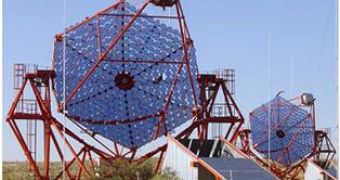The Earth is constantly being bombarded with a huge amount of cosmic rays every day, however, most of these are quickly absorbed by the atmosphere. The vast majority subatomic particles usually come from our own Sun and pack a relatively low energy, but from time to time, Earth has received a dose of highly energetic particles emitted either by the galactic core or by the explosion of a nearby supernova.
Determining which of the two is the real source of the energetic cosmic rays represents a crucial aspect in astrophysics study, taking into consideration the fact that they have a great role in the dynamics of the universe. The detection of these subatomic particles involves observing the effects they produce of Earth's atmosphere, respectively the blue flash of light given of by Cerenkov radiation. The Cerenkov radiation emission is produced when a subatomic particle exceeds the speed of light in the medium through which it passes.
The Cerenkov radiation consists of the emission of two blue light cones, the first produced by the original particle coming from out of space, and the second one occurs as a result of interaction between the atmosphere and the particles created in the first reaction.
Ground-based observations are usually capable of detecting only the second light flash, which is not enough to determine the source of the body emitting them; thus, to obtain detailed measurements, expensive instruments such as balloons and satellites are needed. In order to solve this 'little' problem, Scott Wakely, from the University of Chicago, proposed the creation of a land-based instrument that would have the resolution of about 10 times that of the previous ground-based instrument and would also be able to determine the light emission, without using high altitude instruments.
Though Earth's surface is being routinely hit by millions of subatomic particles, the high energy particles have a low probability of hitting the same place in a relatively small amount of time, and scientists need hundreds of thousands of particles to make a precise measurement, which could not only point towards the direction from which the radiation is coming, but also the element that has originally emitted it.
Furthermore, the concept proposed by Wakely could also solve the problem related to the sudden decrease in high energy cosmic ray frequency observations, which point towards a decrease in the energy spectrum. Most of the current models involving this phenomena propose that the cosmic rays emitted by a supernova suddenly run out of energy, without any specific explanation.

 14 DAY TRIAL //
14 DAY TRIAL //